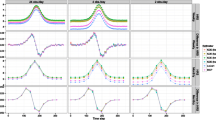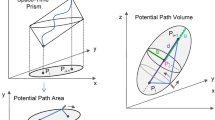Abstract
Because of the low number of observation points per animal attainable in insect movement studies, linear parameters are frequently used to quantify the data. These linear parameters are evaluated, as well as several home range estimators, by means of an empirical study of the bush cricket Phaneroptera falcata (Insecta: Ensifera) and a Monte Carlo simulation model. The examination of differences between complete and artificially reduced data sets, as well as between the “real” (i.e. simulated) data set and the data recorded by a simulated observer, allows us to quantify robustness and bias of the evaluated parameters. We show that nearly all tested methods are strongly influenced by the resight number of the investigated individuals. Hence, those parameters should be used cautiously in studies with few resights, i.e. in insect studies as well as studies on vertebrates. Results of earlier studies should be reconsidered and some comparisons between different studies are questionable. Estimates of home range using a 95% ellipse with fewer than five locations are extremely unreliable (overestimation). The minimum convex polygon leads to a clear underestimation. The robustness of both parameters is low. Among the home range parameters the kernel method is most robust, but it leads to an overestimating bias. The harmonic mean method is the only home range parameter whose results are comparable to the area actually used. However, this method requires a minimum number of 11 observation points per individual. Evaluating the linear parameters, the mean daily movement and the total recorded movement are inappropriate for statistical analyses, because of their high sensitivity to the resight number. Maximum activity radius and dispersal range are much more robust. They are not as sensitive to sample size and deviate little from the “real” values of the parameters. However, this bias is statistically significant. The mean activity radius of an individual is the most useful linear parameter. This measure is very robust down to a sample size of four individual locations and compares well with the real parameter values.
Similar content being viewed by others
Author information
Authors and Affiliations
Additional information
Received: 12 March 1996 / Accepted: 30 September 1996
Rights and permissions
About this article
Cite this article
Samietz, J., Berger, U. Evaluation of movement parameters in insects – bias and robustness with regard to resight numbers. Oecologia 110, 40–49 (1997). https://doi.org/10.1007/s004420050131
Issue Date:
DOI: https://doi.org/10.1007/s004420050131




